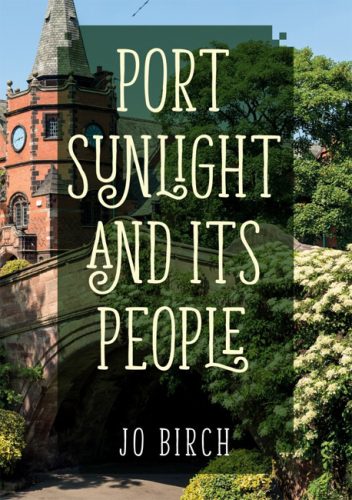By Jo Birch
Amberley Publishing
£14.99
Book review by Joe Coventry
This is an intimate take on the iconic village from an author who is in love with the place. That said the book barely scrapes the surface when it is not eulogising its founding fathe,r Lord Leverhulme, or his friends and family. Naturally enough he takes centre stage but there is a lot more of the history or characters of the place that this slim volume does not explore.
The erstwhile William Lever, a greengrocer from Wigan, rose through the ranks to eventually become the leading soap manufacturer of the world, when he moved to build his factory on a greenfield site in 1881. His ‘stinking soap’, produced on an industrial scale, became a worldwide phenomena and provided exceptional housing and stable employment in idyllic surroundings for a grateful workforce.
However, as he climbed the social ladder to become a Liberal MP prior to elevation in the House of Lords, his philanthropy and industrial zeal get more than a fair share of the gorgeous to look at but slim on content, 96 page volume.
It may be because of the author’s slant on the material, her collection of postcards, Victorian ‘scraps’, newspaper cuttings, access to early meticulous accounts or other memorabilia like lunch menus or invitations to the Ball, that the narrative gravitates to his Lordship; who wouldn’t want to be a fly on the wall on such lavish occasions in the confines of Thornton Manor or the Chelsea ‘Set’.
These artifacts are a permanent record of the years leading into the 20th Century and the decades beyond, but there is little to relate much after that.
A trip round the Port Sunlight today shows what a wonderful place it was and still is. We are given recollections of early residents and visitors, outlining in simple messages the daily life of the community or guided visits to the factory and of the 500 school children being brought up in ‘delightful’ educational facilities, but they are framed in a time warp long ago. Little of what has happened in the modern era is recorded, short of visits from passengers on cruise liners, come to hear about connections to the Titanic and Lusitania.
There is a painting by artist Gordon Wilkinson of the Lady Lever Gallery, which houses the benefactor’s personal great art collection, and one by Stuart Irwin of the Old Post Office which is now a Tea Room.
It is in the latter, among the tea and cake stands and memories of fading grandeur, that the book may well become a souvenir of choice to take away to distant far-flung places. Just as Sunlight or Lifebuoy Soap similarly has proceeded in the wake of the world’s imagination.
